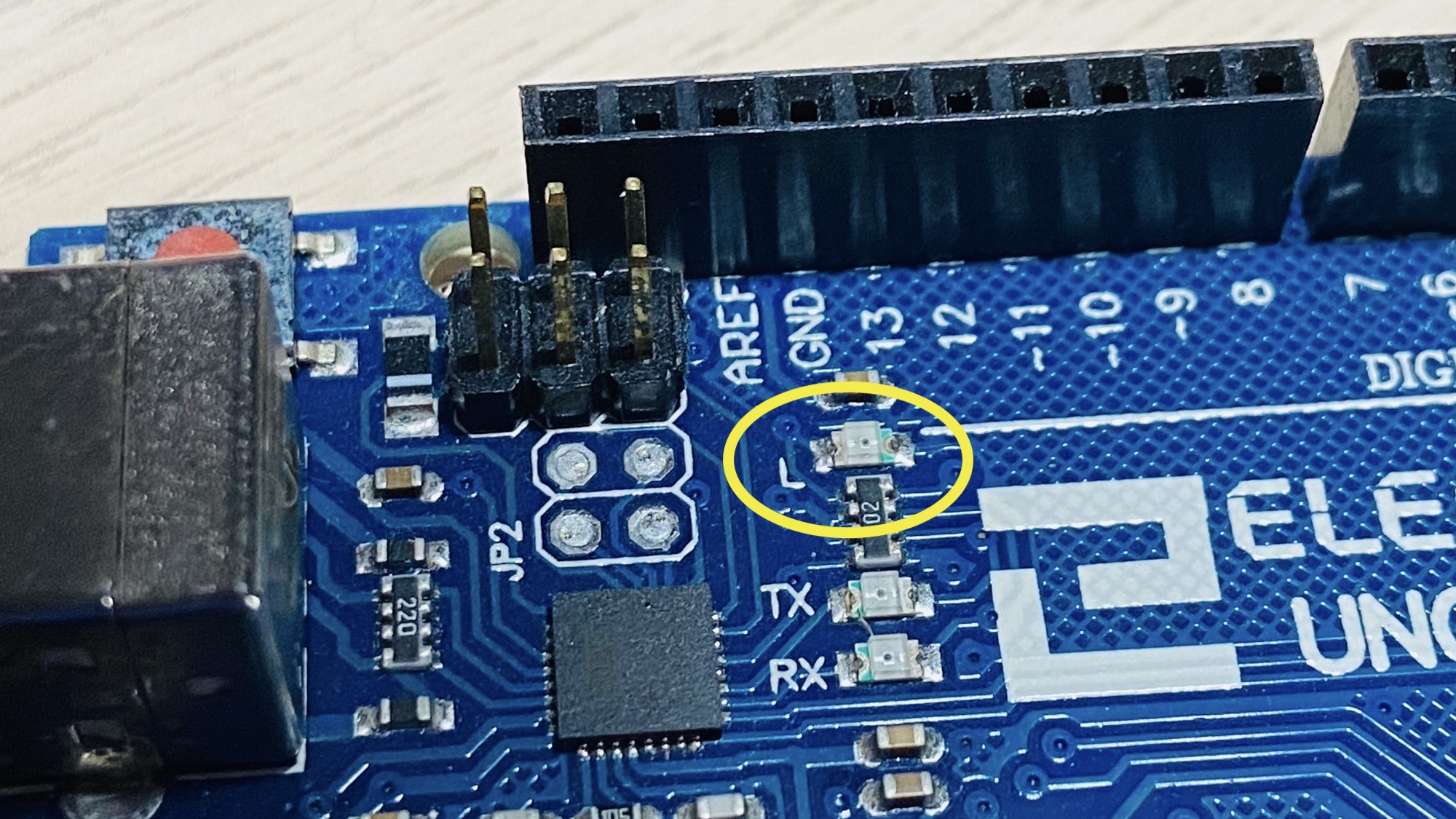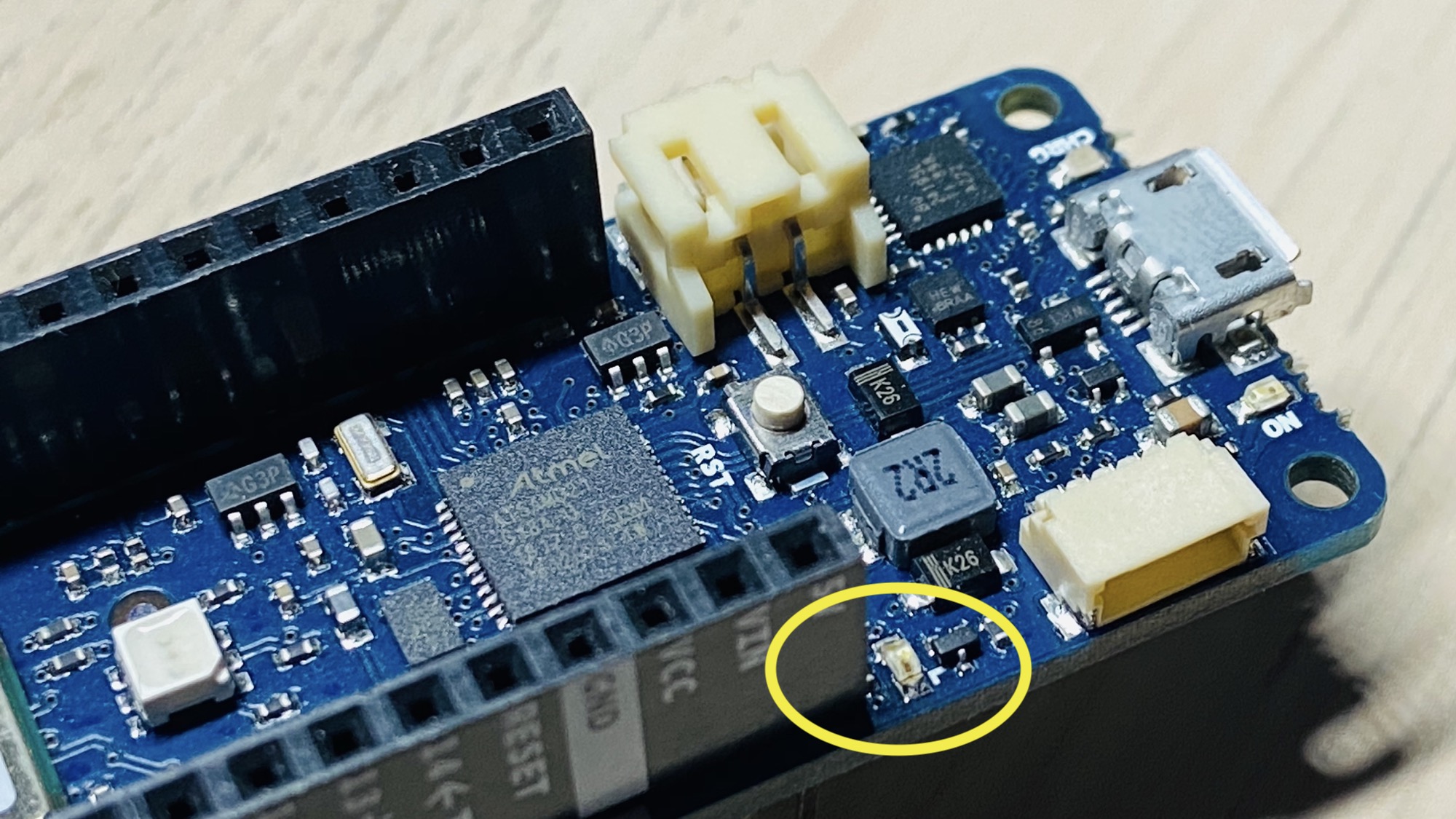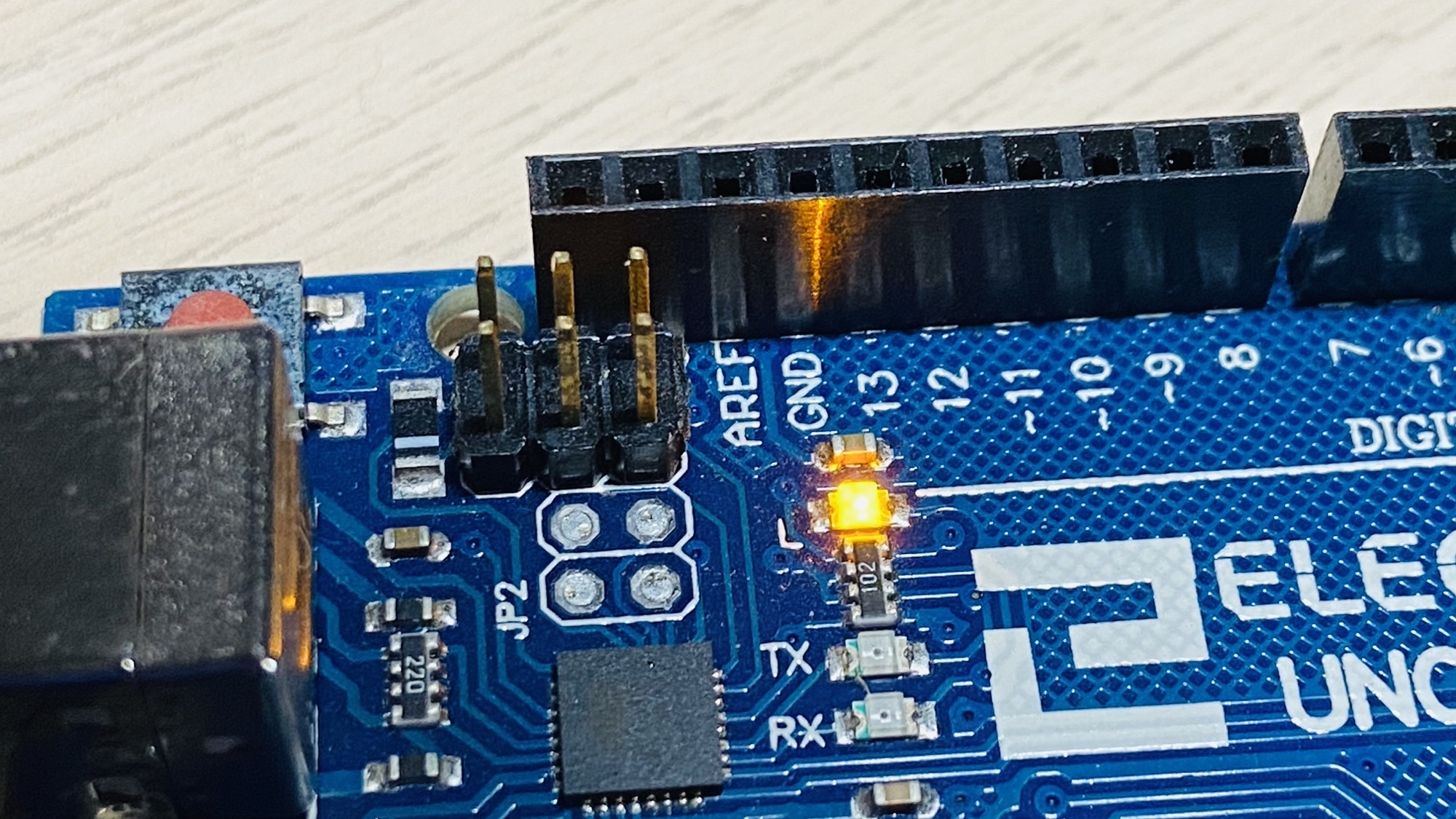The Arduino built-in LED
Arduino boards come with a little utility: the built-in LED.
It is identified by the letter L next to it. On the Arduino Uno, it is near pin #13:

On the Arduino MKR 1010 WiFi it is near the 5V output pin:

This LED is connected to the digital I/O pin #13 in most boards. In some boards, like the Arduino MKR series, it’s linked to the pin #6.
In any case you can reference the exact pin using the LED_BUILTIN constant, that is always correctly mapped by the Arduino IDE to the correct pin, depending on the board you are compiling for.
To light up the LED, first you need to set the pin to be an output in setup():
pinMode(LED_BUILTIN, OUTPUT);
Then you can send it a HIGH signal:
digitalWrite(LED_BUILTIN, HIGH);
or
digitalWrite(LED_BUILTIN, 1);

Here is a simple program that makes the built-in LED blink every second:
void setup() {
pinMode(LED_BUILTIN, OUTPUT);
}
void loop() {
digitalWrite(LED_BUILTIN, HIGH);
delay(1000);
digitalWrite(LED_BUILTIN, LOW);
delay(1000);
}
→ I wrote 17 books to help you become a better developer:
- C Handbook
- Command Line Handbook
- CSS Handbook
- Express Handbook
- Git Cheat Sheet
- Go Handbook
- HTML Handbook
- JS Handbook
- Laravel Handbook
- Next.js Handbook
- Node.js Handbook
- PHP Handbook
- Python Handbook
- React Handbook
- SQL Handbook
- Svelte Handbook
- Swift Handbook
Also, JOIN MY CODING BOOTCAMP, an amazing cohort course that will be a huge step up in your coding career - covering React, Next.js - next edition February 2025